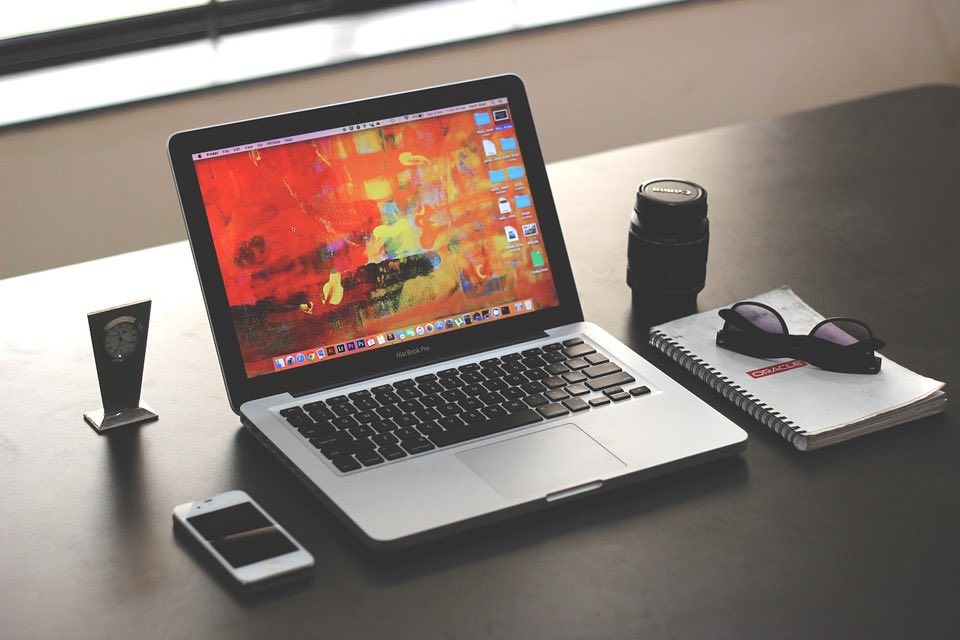

In today’s digital age, purchasing a laptop online has become increasingly popular. However, it’s crucial to be well-informed before making such a significant investment. Let’s learn more about this topic below with Shady Bears. From understanding specifications to avoiding common pitfalls, this comprehensive guide will equip you with the knowledge needed to make a smart laptop purchase that meets your needs and budget.
When it comes to buying a laptop online, one of the most important steps is identifying the type of laptop that best suits your needs. Different categories of laptops are designed to cater to specific user groups and use cases. Understanding these categories can help you narrow down your options and make a more informed decision.
Gaming laptops are powerhouses designed for high-performance gaming and intensive tasks. They typically feature powerful processors, dedicated graphics cards, and high-refresh-rate displays. These laptops are ideal for gamers, video editors, and 3D designers who require top-notch performance.
Key features to look for in gaming laptops include:
. High-end processors (Intel Core i7 or i9, AMD Ryzen 7 or 9)
. Dedicated graphics cards (NVIDIA RTX or AMD Radeon RX series)
. High refresh rate displays (144Hz or higher)
. Ample RAM (16GB or more)
. Fast storage solutions (NVMe SSDs)
. Effective cooling systems
Keep in mind that gaming laptops are often bulkier and have shorter battery life compared to other categories due to their powerful components.
Business laptops are designed for professionals who prioritize productivity, reliability, and security. These laptops often come with features that cater to business needs, such as enhanced security measures, longer battery life, and durability.
Key features to consider in business laptops include:
. Robust build quality and durability
. Long battery life
. Security features (fingerprint readers, facial recognition, TPM)
. Comfortable keyboard and touchpad
. Connectivity options (Thunderbolt, USB-C, HDMI)
. Business-oriented software suites
Many business laptops also offer easy upgradability and serviceability, which can be crucial for IT departments managing multiple devices.
Student laptops are designed to balance performance, portability, and affordability. These laptops need to be versatile enough to handle various tasks, from writing papers to light content creation.
Key features to look for in student laptops include:
. Lightweight and portable design
. Decent battery life (8+ hours)
. Adequate performance for multitasking
. Affordable price point
. Durable build quality
. Good keyboard for comfortable typing
Many student laptops also come with educational discounts or bundles that include useful software for academic work.
Read more: Best Laptops Under 1000 for Everyday Use
Creative workstations are high-performance laptops tailored for professionals in fields like graphic design, video editing, and 3D modeling. These laptops offer powerful specifications similar to gaming laptops but with a focus on color accuracy and professional-grade components.
Key features to consider in creative workstations include:
. High-performance processors
. Professional-grade graphics cards (NVIDIA Quadro or AMD Radeon Pro)
. High-resolution displays with excellent color accuracy
. Large amounts of RAM (32GB or more)
. Fast and spacious storage options
. Extensive connectivity for peripherals and external displays
Creative workstations often come with software certifications for professional applications, ensuring optimal performance and compatibility.
Budget PCs are designed to offer essential computing capabilities at an affordable price point. While they may not have the latest and greatest components, they can still handle everyday tasks like web browsing, word processing, and media consumption.
Key considerations for budget PCs include:
. Adequate performance for basic tasks
. Reliable build quality
. Decent battery life
. Essential connectivity options
. Affordable price range
When shopping for budget PCs, it’s important to prioritize your needs and find the best balance between performance and price.
High-performance desktops offer the ultimate in computing power and are ideal for users who need top-tier performance for demanding tasks like gaming, video editing, or scientific simulations.
Key features to look for in high-performance desktops include:
. Powerful processors (latest generation Intel Core i9 or AMD Ryzen 9)
. High-end graphics cards
. Large amounts of fast RAM (32GB or more)
. Multiple storage options (NVMe SSDs and large capacity HDDs)
. Robust cooling systems
. Expandability options
High-performance desktops often offer more upgrade potential compared to laptops, allowing users to keep their systems up-to-date over time.
Read more: What Is the Best Operating System for Laptops Today
When buying a laptop online, it’s crucial to understand the key specifications that impact performance, usability, and overall value. Let’s delve into the most important components and features to consider.
The processor, or CPU, is the brain of your laptop. It handles most of the computations and directly affects the overall performance of your system. When comparing CPUs, consider the following factors:
. Number of cores and threads
. Clock speed (base and boost)
. Cache size
. Power efficiency
Popular CPU brands include Intel (Core i3, i5, i7, i9) and AMD (Ryzen 3, 5, 7, 9). Generally, higher numbers indicate better performance, but it’s essential to compare specific models and generations for a more accurate comparison.
The graphics card, or GPU, is responsible for rendering images and videos. For basic tasks, an integrated GPU (built into the CPU) is often sufficient. However, for gaming, video editing, or 3D rendering, a dedicated GPU is recommended.
Key factors to consider for GPUs include:
. VRAM capacity
. Core clock speed
. Memory bandwidth
. Power consumption
Popular GPU brands include NVIDIA (GeForce series) and AMD (Radeon series). For professional applications, workstation-grade GPUs like NVIDIA Quadro or AMD Radeon Pro are often preferred.
RAM is crucial for multitasking and running memory-intensive applications. More RAM allows you to run more programs simultaneously and handle larger datasets.
Consider the following when looking at RAM:
. Capacity (8GB minimum, 16GB or more recommended)
. Type (DDR4 is current standard, DDR5 is emerging)
. Speed (measured in MHz)
. Upgradability (some laptops allow for easy RAM upgrades)
For most users, 16GB of RAM is a good starting point, while power users may want to opt for 32GB or more.
The type and capacity of storage in your laptop can significantly impact performance and user experience. The two main types are:
. Hard Disk Drives (HDD): Offer larger capacities at lower prices but are slower and more prone to physical damage.
. Solid State Drives (SSD): Provide faster read/write speeds, improved reliability, and lower power consumption but at a higher cost per gigabyte.
Many modern laptops use NVMe SSDs, which offer even faster speeds than traditional SATA SSDs. Some laptops combine both SSD and HDD storage for a balance of speed and capacity.
The display is a crucial component of any laptop, affecting both usability and portability. Consider the following factors:
. Size: Ranges from 11″ to 17″+, with 13″ to 15″ being most common
. Resolution: Higher is generally better (Full HD, QHD, 4K)
. Panel type: IPS, VA, or OLED (each with pros and cons)
. Refresh rate: Higher rates (e.g., 144Hz) provide smoother visuals
. Color accuracy: Important for creative work
Remember that larger screens and higher resolutions often come at the cost of reduced battery life and increased weight.
Battery life is a critical factor for mobile users. When evaluating battery life, consider:
. Capacity (measured in Watt-hours)
. Claimed battery life (often optimistic)
. Real-world usage reports from reviews
. Power-saving features
Keep in mind that factors like screen brightness, workload, and connectivity can significantly impact battery life.
Effective cooling is crucial for maintaining performance and longevity, especially in high-performance laptops. Look for:
. Multiple heat pipes and fans
. Strategically placed vents
. Advanced thermal compounds
. Software-controlled fan speeds
Some gaming laptops feature vapor chamber cooling for even better heat dissipation.
Build quality affects both the durability and user experience of a laptop. Consider:
. Materials used (aluminum, magnesium, plastic)
. Rigidity of the chassis
. Quality of hinges and keyboard
. Resistance to flex and creaking
Premium laptops often use higher-quality materials and have better overall build quality.